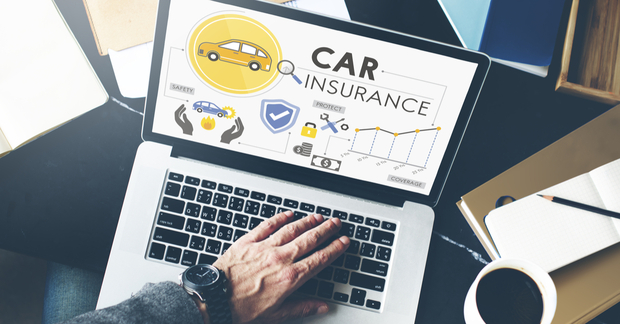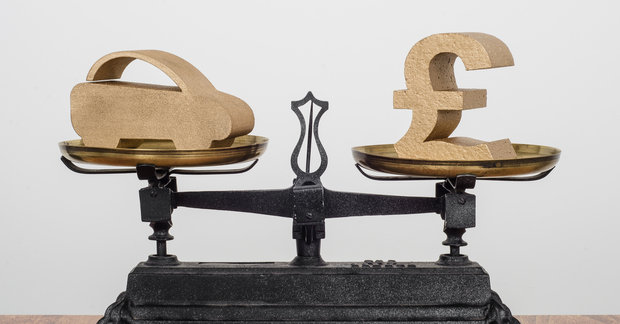How Much Car Allowance Should I Get Uk
For many employees, having company car allowance is the stuff of dreams. That's probably why companies that offer them leave their competition by the wayside. But at what cost? Here's a guide to implementing a company car allowance policy.
What we'll cover
- Company car vs car allowance scheme: pros and cons for employers
- The benefits of company car allowance
- The difference between a company car scheme and car allowance
- BiK and car allowance tax
Why would you give your employee a company car allowance?
There are very specific benefits connected to providing a company car allowance:
- Owning a company car can be seen as a reward for loyalty
- It provides an alternative to relocation for new employees
- It improves overall employee satisfaction and wellbeing
However, with fuel costs rising amidst concerns over the shift to hybrid and electric cars, the promise of a company car can come with growing costs and taxes. As such, many fleet drivers are choosing to take a cash alternative, reaching for a competitive personal contract purchase (PCP) deal instead. But what are the advantages and disadvantages of this? How does company car allowance work? And how will salary sacrifice schemes impact overall employee remuneration?
Car allowance or company car: a quick overview
Are you going to offer your employees car allowance or are you looking into providing a company car? We've created a quick overview for employers to see what their options are.
Pros: Company Car
-
Possibility for branding cars, especially for sales representatives
-
Great incentive to attract top talent
-
You have control over the choice of vehicle
-
Easy to control the costs
Cons: Company Car
-
You're responsible for repairs, servicing and driving costs
-
You're liable for vehicle insurance
-
You're responsible for selling the car in the end or when the employee leaves
-
It could be inefficient regarding taxes for both parties
-
A company car scheme requires a significant investment upfront
Pros: Car Allowance
- Cash allowances' administration and maintenance costs are passed onto the driver, less responsibility for you as an employer
- You can avoid company car tax and still offer a big benefit to employees
Cons: Car Allowance
- Could be more expensive in a changing economy, when you end up paying employees more than what their car costs due to price drops
Company Car vs Car Allowance - What's The Difference?

One obvious factor that compels employees today is the freedom of choice. The automobile industry is thriving with technological advancements at its helm. For an employee who uses their vehicle as an extension of their office, it's no longer simply a means of getting from point A to B. The increasing practicality provided by added mod cons such as sat nav, Bluetooth, hands-free calling and parking sensors are paramount.
By allowing employees to select a new car, with PCP there's a greater chance that they can select their vehicle at a competitive rate. PCPs also offer increased flexibility. Since the scheme only covers the depreciation of the vehicle over the duration of an agreement, rather than its full value, monthly payment plans can be brought down, which provides greater freedom based on their financial restraints. When the customer reaches the end of their agreement, they can choose to either hand the keys back, buy the vehicle or begin a new PCP.
Reassurance and insurance

When a company has its own maintained, insured and serviced fleet, the drivers, of course, have more security. Employers in possession of a fleet of cars can provide their people a cheaper option, when taking into account tax savings and salary sacrifices schemes in comparison to straight-up monetary repayments, and any initial upfront costs.
If a cash alternative is made readily available to employees, new HMRC tax regulation will likely be triggered, meaning employees will be taxed on higher Benefits in Kind (BiK) or the cash allowance. Alongside the employee's higher tax liability, those offered cash allowances will lose the incentive to choose low emitting vehicles, since the tax benefit will be eroded.
Additionally, the employer will also be subjected to higher National Insurance contributions on any vehicles that were previously valued as a low BiK, making the process more complex and convoluted for new and existing employees based on their different demands and needs.
Personalisation vs. unification
Read next: Employee Benefits - a guide for success
Another factor is branding. Part of the attraction to corporate car fleets is the uniformity with which they portray the company. Decisions relating to image and the operating cost play a huge part in the selection process. This often restricts certain makes, models and body types, such as convertibles or, for environmental reasons, certain emission brackets and fuel types.
However, cash allowances depend on the employee directly sourcing their vehicle from a dealership or website, which can be time-consuming. To avoid running into such complications, management should be mindful of this when considering the option to offer a cash allowance — especially in smaller teams. As the rates of BiK tax change every tax year, employers must remain savvy or risk forking out reimbursement costs to their employees.
The basics of BiK and car allowance tax

Every year the question of how much tax an employee will have to pay towards their annual BiK tax is calculated using three key factors.
- Driver earnings
- The cost of the car
- The amount of CO2 it emits.
Here's how it works: a person earning a lot of money in possession of an expensive car that emits high levels of CO2 will, quite rightly, pay through the nose in BiK tax. Reverse those three factors and they'll pay less.
With a unified fleet of pre-chosen cars, on the other hand, a company can easily figure out overall fuel costs and required mileages and dedicate resources accordingly. This cuts out the trouble of having to adjust an employee's salary to meet their automobile tastes and habits.
However, with the growing focus on electric cars and surcharge of 4% on diesel cars, there's much debate about how the Vehicle Excise Duty (VED) will be affected. This is a basic amount payable on all cars, based on their CO2 emissions, regardless of whether they're for personal or business use.
Added to this, employers can find themselves caught up in the debate over whether or not to shift to an electric run fleet in the interim, and forking out for additional costs.
Hands-on or hands-off?

Cash allowances for company cars are typically added onto the employee's monthly salary, which means it's subject to normal income tax. Employees will therefore need to calculate how this affects their take-home as tax bands come into play.
In the case of company-provided cars, the administration and maintenance are cared for by the business, leaving less choice for an employee but also less hassle. In contrast, cash allowances' administration and maintenance costs are passed onto the driver. This gives further freedom in choosing a motor but also less guidance towards the overall upkeep.
Such decisions should not be taken lightly. This guide explains the considerations you should take when researching the best decisions for you.
Reducing your car tax
Is car allowance taxable? For people who are curious about tax implications in the UK and want to cut back on how much car tax they're paying, there are several things to keep in mind. Making the switch to an electric car or want to know more about what making specific changes to your car means for how much taxes you pay? Check out this useful guide on company cars and taxes.
Company car vs car allowance: what you should consider
| Consideration | Company car | Cash allowance |
| Financial Control |
|
|
| The Owner of the Car |
|
|
| Insurance Policies |
|
|
| Maintenance Responsibilities |
|
|
| Fuel and Reimbursement Policy |
|
|
| Duty of Care |
|
|
| The Environment |
|
|
| Choice of Vehicle |
|
|
Steering your thoughts

There's no single right way to approach car allowance. It's ultimately a question of whether a company wants to put the responsibility into their employee's hands. It's in turn up to an employee to consider whether accepting the cash and freedoms that surrounds owning their car is worth the costs in upkeep and salary sacrifice.
Regardless of the approach you decide to take, always research your options carefully.
How Much Car Allowance Should I Get Uk
Source: https://www.perkbox.com/uk/resources/blog/car-allowance-the-ultimate-guide

0 Response to "How Much Car Allowance Should I Get Uk"
Post a Comment